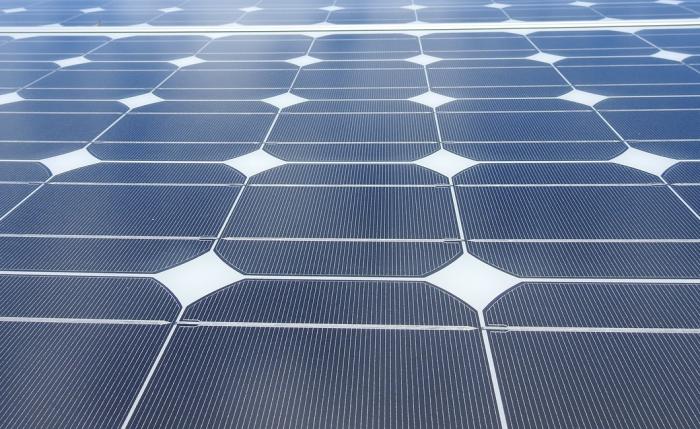
Solar panels image : 3444753
Where are the current top solar locations in Australia? What areas installed the most small-scale solar power systems in December? How many battery systems were installed with new solar in December?
Based on information released yesterday by the Clean Energy Regulator and current as at December 31, 20171, here are the top ten postcodes in Australia; ranked by the number of small-scale systems installed2:
- 4670 (Queensland –Bundaberg area) – 11,592 systems / 40,137.56 kW total
- 6210 (Western Australia – Mandurah area) – 11,173 systems / 31,417.16 kW total
- 4655 (Queensland – Hervey Bay area) – 10,338 systems / 32,887.26 kW total
- 4551 (Queensland – Sunshine Coast area) – 9,175 systems / 27,077.63 kW total
- 4350 (Queensland – Toowoomba) – 8,457 systems / 29,385.52 kW total
- 6065 (Western Australia – Perth area ) – 8,219 systems / 29,417.58 kW total
- 4211 (Queensland – Gold Coast area) – 7,619 systems / 27,447.85 kW total
- 4305 (Queensland – Brisbane area) – 7,190 systems / 22,395.50 kW total
- 4740 (Queensland – Mackay area) – 7,123 systems / 30,608.63 kW total
- 6155 (WA – Canning Vale area) – 7,011 systems / 22,952.79 kW total
December 2017’s leaderboard hasn’t changed in terms of postcode ranking positions since we looked at these figures in May last year. It should be kept in mind that all of the above are high population centers and perhaps a “fairer” top ten list would be based on kilowatts installed per capita.
By the end of last year, more than 1,795,342 small-scale solar power systems had been installed across Australia, with a collective capacity of 6.4 gigawatts according to the Regulator’s latest figures.
December 2017 Top Ten Installation Postcodes
Western Australia and Queensland postcodes again dominated the top ten list for installations that took place in December.
- 6122 – 102 systems – 463.145 kW
- 4655 – 54 systems – 294.625 kW
- 6210 – 50 systems – 263.185 kW
- 6164 – 49 systems – 306.040 kW
- 4670 – 44 systems – 269.319 kW
- 6122 – 44 systems – 200.075 kW
- 4510 – 41 systems – 237.790 kW
- 6163 – 37 systems – 244.810 kW
- 6280 – 33 systems – 187.010 kW
- 4551 – 32 systems – 182.880 kW
The CER’s figures indicate 6,519 systems were installed nationally in December, with a collective capacity of 42.2 megawatts.
The latest Renewable Energy Index from Green Energy Markets and GetUp! stated rooftop solar panels installed in December across Australia will deliver an estimated $209 million in power bill savings over the next ten years.
Home Battery System Revolution – Are We There Yet?
Not quite. Here’s how things shaped up by the end of December in terms of total concurrent solar + battery storage installations reported in each state/territory:
- NSW: 2,612
- QLD: 1,329
- VIC: 1,138
- SA: 605
- WA: 455
- ACT: 278
- TAS: 116
- NT: 26
- Total: 6,559 (since 2014, when CER started tracking concurrent solar + storage installs)
According to the latest Cracking The Small Scale Code from the Regulator, 145 new solar PV systems had a concurrent battery storage installation in December3. Based on that figure, less than 3% of new solar system installations during December also had batteries included.
A very interesting figure would be how many battery systems have been retrofitted to existing PV systems, but this information isn’t available from the Clean Energy Regulator.
A bold prediction was made last year that new solar + battery installs will start to outstrip solar-only installations over the course this year. Given the rapid clip at which solar power systems have been installed and should that trend continue, the prediction coming true would mean truly eye-popping figures for home energy storage this year.
Footnotes
- When eligible solar power systems are installed, they qualify for Small-scale Technology Certificates (STCs), which form the basis of Australia’s “solar rebate“. STCs can be created up to 12 months after installation occurs, so installation figures can rise. ↩
- Small scale systems are those less than 100kW capacity that have registered for STCs, including small commercial installations claiming STCs. ↩
- The report to the end of November indicated 5,940 concurrent solar + battery installations (cumulative), a difference of 619 compared to the end of December. The discrepancy could perhaps be related to the permitted STC creation period, mentioned above. ↩

 RSS - Posts
RSS - Posts



As usual a very good anaysis of available data, presented in a compact and readable format…….good work team. ?
The information would have been of more value, if it had been presented on a per capita (or, even better, per 100,000 people) basis.
It has occurred to me, that the above article is like saying that the LNP is the most evironmentally friendly organisation in Australia, becauise its gangleader’s private palace (funded by misappropriation) has a bigger rooftop PV system than any other gangleader in Australia (probably because most other gangleaders can not afford such palaces with such roof capacity for such large PV systems), regardless of how much fuel has been burnt by the armada shipping the country’s assets to that gangleader’s hideaway in the Cayman Islands.